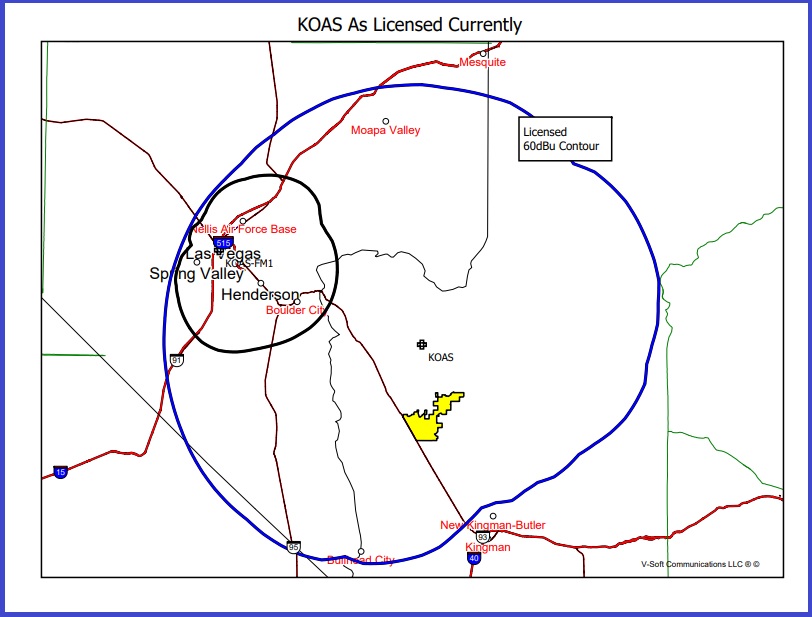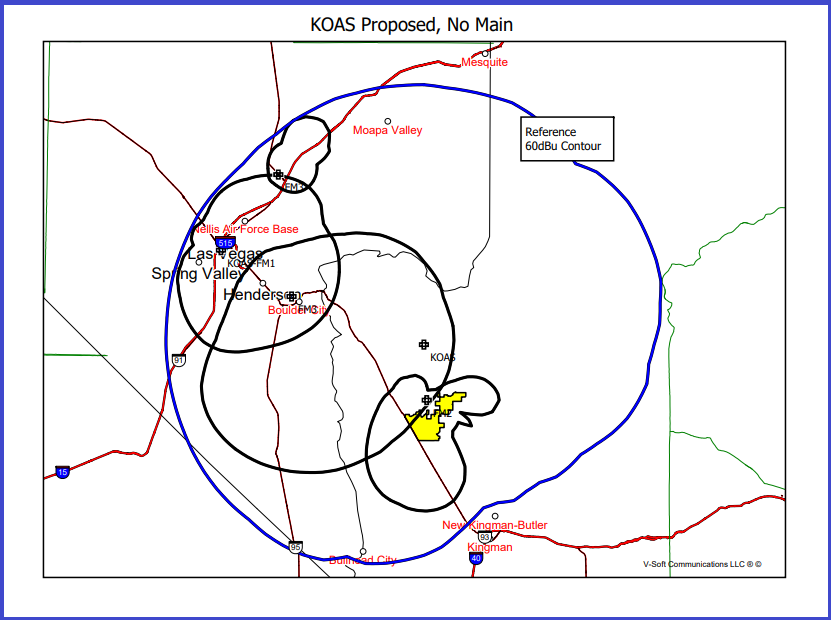A technology company that advocates specialized booster systems is laying out a bold proposal for the FM band in the United States.
GeoBroadcast Solutions says the FCC should allow broadcasters to stop using main transmitters or substantially reduce their power. Instead stations would be allowed to employ “distributed transmission systems” to serve their communities, using the same coverage and non-interference requirements, but with much less expense.
The company is “urging the modernization of regulations that currently mandate the use of a main transmitter by radio broadcasters.” It filed comments in response to Chairman Brendan Carr’s “Delete, Delete” initiative. Almost 900 comments have been submitted as of Monday afternoon.
GBS is the company that developed the ZoneCasting geotargeting technology, which we have covered extensively here and that recently was permitted by the FCC.
But in this filing GBS is laying out an argument for a sweeping reconsideration of how FM radio stations can operate in the United States.
“Under current FCC rules, licensees are required to maintain a central main transmitter, a policy originally designed decades ago when large, high-powered towers were the only means to provide coverage,” it wrote in a summary.
“However, GBS’s filing argues that this one-size-fits-all rule no longer serves the realities of today’s radio broadcasting landscape, especially as distributed transmission systems (DTS), often referred to as boosters, have proven to be more effective and more sustainable in many markets.”
A GBS spokesperson said, “Broadcasters should not be forced to bear the high costs and environmental burdens of maintaining a main transmitter when modern, distributed systems can provide equal or better service to listeners.”
The company said that under its proposal, broadcasters who wish to continue using traditional infrastructure could do so. “For those ready to evolve, GBS’s plan opens the door to innovation without increasing interference or altering coverage obligations. … [I]t simply introduces flexibility.”
GBS provided a case study using KOAS(FM) in Las Vegas as an example. “A comparison of current versus proposed coverage maps illustrates how KOAS’s signal remains fully within its designated contour and even improves urban coverage without reliance on a costly and environmentally burdensome tall tower.” (The two images are at the bottom of this story.)
It argues that distributed systems are less vulnerable to natural disasters. Eliminating the need for large towers also can reduce energy consumption and costs of real estate and insurance. Broadcasters would also be allowed to target dense population centers more effectively, “overcoming terrain and urban interference challenges.”
“The FCC proceeding seeks to eliminate outdated regulations that impose unnecessary burdens on American businesses. GBS’s proposal aligns with this vision by offering a path forward that preserves the integrity of public radio while unlocking significant cost savings and service benefits,” it wrote.
You can read the full filing here.
Details
“An inflexible main-transmitter requirement with no alternative technology allowed forces broadcasters to maintain expensive equipment that is not the most effective way to reach their audience,” GBS argues.
“When this version of the main transmitter rule was adopted nearly 50 years ago, main transmitters were the only and best available way to broadcast a signal across a wide area. But one needs to understand that main transmitters from the very beginning had challenges in covering their full service area — that is why in the same time frame the commission also adopted rules allowing boosters, thus demonstrating that there always have been gaps inherent in the operation of main transmitters for boosters to supplement.”
Today, GBS said, many broadcasters mostly use boosters to serve their listening audience while the main transmitter at best serves a secondary purpose.
“Broadcasters in cities major markets such as Las Vegas, Denver, Salt Lake City, San Francisco, Oklahoma City, and in smaller markets from Spokane, Wash., to Cumberland, Md., could provide more robust and complete coverage inside their contours using a system of distributed transmission technology via ‘boosters’ than relying on the main transmitter to serve core audiences,” it wrote.
“Additionally, many radio stations that are fully spaced as a full class station (e.g., Class C with a 91.8 km primary service contour) cannot serve the entire contour to which they have been assigned since they cannot build a tower to achieve 600 meters height above average terrain. So while pursuant to the FCC Table of Separations the station is fully protected to the full-class facility, as a practical matter the tower the station can construct does not transmit a quality signal over the total area they are authorized to serve.”
GBS said that this “regulatory anomaly” could be cured if that broadcaster could use a distributed transmission system focused on a full-service “reference coordinates” established by the broadcaster. “[T]hat would enable the station to fully serve the area they are allocated without the need to erect tall towers or build in environmentally sensitive areas.”
GBS said approximately 450 FM booster stations are licensed or authorized for construction. “[T]he benefits of boosters to serve a community have been clearly established. The benefits from a public interest perspective are therefore clear: In some markets and for certain broadcasters, a broadcaster can show the commission and the public that a distributed transmission system can provide at least the same coverage of the community as a main transmitter (and frequently better quality signal) with a reduced outlay for capital and operational expenditures.”
It said booster technology has advanced to give some broadcasters a fully functional alternative to a main transmitter at reduced costs.
“Removing the inflexible main transmitter requirement would provide significant cost savings to businesses in a competitive and financially challenging marketplace,” it argued.
GBS said that instead of covering an area with one tall tower operating at high power, shorter towers located frequently much closer to population centers allow for more efficient coverage, and this engineering approach easily can be designed to cover an entire market area if desired.
“The increased sophistication of fully synchronized boosters over the past decade or more has enabled FM broadcasters to take advantage of this shift in technology. Consequently, today it is possible for FM stations to cover their given service area with a combination of a main transmitter and boosters; or with a series of reduced-power boosters without the main transmitter at all.”
It said serving a community with a distributed transmission network does not need more spectrum, since the boosters all operate on the same assigned channel as the main transmitter. “Equally important, this approach also does require a change in the contour of the station, since the booster operations must stay with the designated contour.”
GBS concluded that the FCC should amend its rules to exempt a radio broadcaster from the main transmitter requirement if the broadcaster has demonstrated that it will use a network of transmitters to cover their community at least as well as the main transmitter and also will cause no new interference issues with other broadcasters.
“We suggest the commission retain all of the current rules for allocating a given facility. Fully spaced reference coordinates would be established and adjusted just as they are currently. From that maximum facility, a ‘reference protected contour’ would be generated just as if the tower had been built.”
The filing included the two images below of the KOAS case study.







